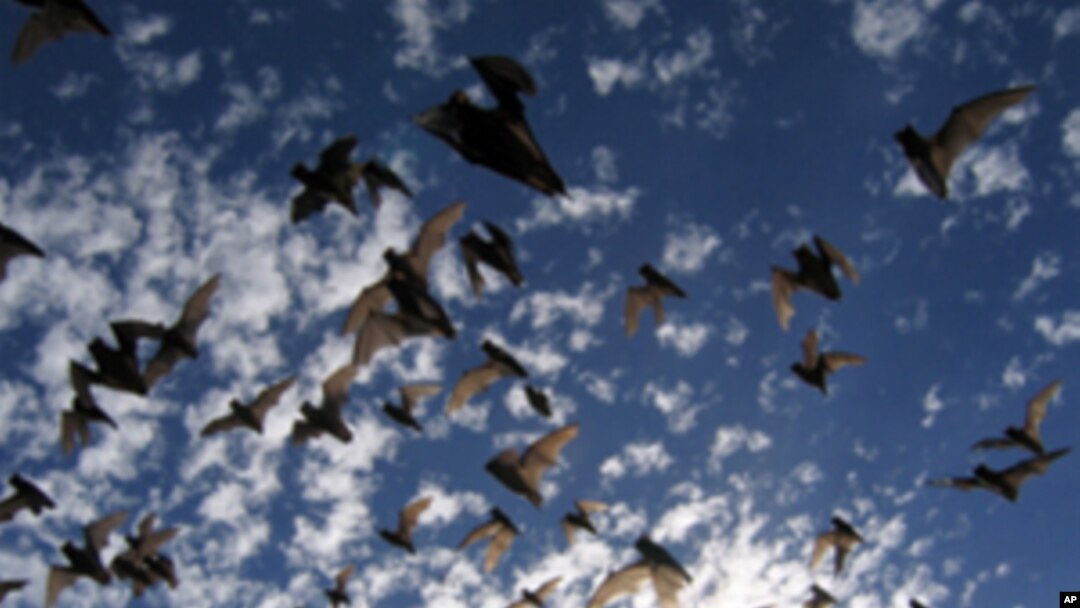The sky is full of life. Now a Boston University biologist is taking a cue from weather forecasters by using radar to get a fuller picture of what happens high above the ground.
"The technology has improved things to the extent that we can see things that we couldn’t see before," says Tom Kunz, who also puts tiny transmitters on bats and birds and uses special thermal imaging tools to track them.
Kunz stumbled on the idea of using radar when he heard about radar stations in Texas that had mistakenly switched from the weather-only mode to the clear-air channel. That signal includes what Kunz calls bio-scatter: bats, birds and bugs. The operators were at first puzzled because they saw clouds on what was a clear night.
Tom Kunz trapping bats in Framingham, Mass.
"And the clouds spread out and about midnight they came back again." Kunz says what the radar showed was clouds of bats on their nocturnal feeding.
Meteorologists routinely filter out the atmospheric bio-mass to make weather predictions. Kunz regards those readings from America’s 156 radar-station network as a continent-wide link to a previously untapped trove of biological information.
"We can actually determine where and when bats or birds are moving across the landscape and use that information to help design locations for wind turbines which would not then be killing as many bats and birds as they are now," he says.
Radar data is updated every five minutes and researchers have access to 20 years of archived data.
Kunz and postdoctoral fellow Winifred Frick, at the University of California Santa Cruz, have started posting that information on an Website called SOAR, short for Surveillance of Aeroecology using weather Radars.
Frick says SOAR is a work in progress which continually surprises her, like the night she logged on to watch a Texas bat cave and saw a wave of insects trapped in an air mass in front of the cave.
"The air mass passed over the bat caves right at sunset and the bats come out and they just forage right along it. It’s like a big buffet line of insects for them," says Frick. "That’s behavior we’ve never seen before because these guys are flying at night and how are we going to observe that if we didn’t have a tool like radar."
A NOAA mobile storm-chasing radar vehicles is deployed outside a bat cave at dusk.
Frick spoke on a panel at the American Association for the Advancement of Science with Tom Kunz and University of Oklahoma meteorologist Philip Chilson. She explains the pressing question that brought the three together: "Do you think we could estimate the number of bats in a bat cloud? Oh? Sure. So that actually initiated this collaboration."
That collaboration set in motion an experiment that could measure radio waves reflected from a single bat, much in the same way radio waves had been calculated from a single raindrop.
Knowing the density of those nightly forays, Frick says, could help advance studies in animal behavior, migration patterns and regional biosphere responses to shifts in climate over time and space.
Among his bat tracking tools Boston University bat expert Thomas Kunz uses thermal imaging and weather radar.
"So we can look at a number of different sites all at once. And that will give us a really good picture about the health of these populations. And this particular species, Brazilian free-tailed bats, does an enormous job for agriculture in terms of eating agricultural crop pests."
Frick sees great promise in the use of radar to chart the biosphere and welcomes collaborators to help move the technology forward. She is also hoping that on some clear cloudless evening the local weathercaster will decide to turn on the bio-scatter radar channel and report on the overhead clouds of bats.


